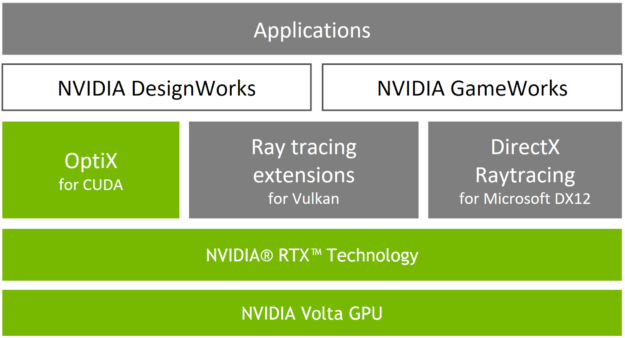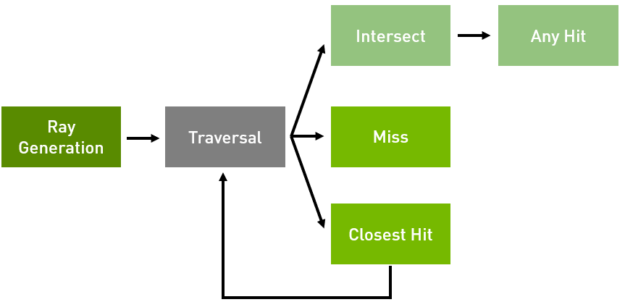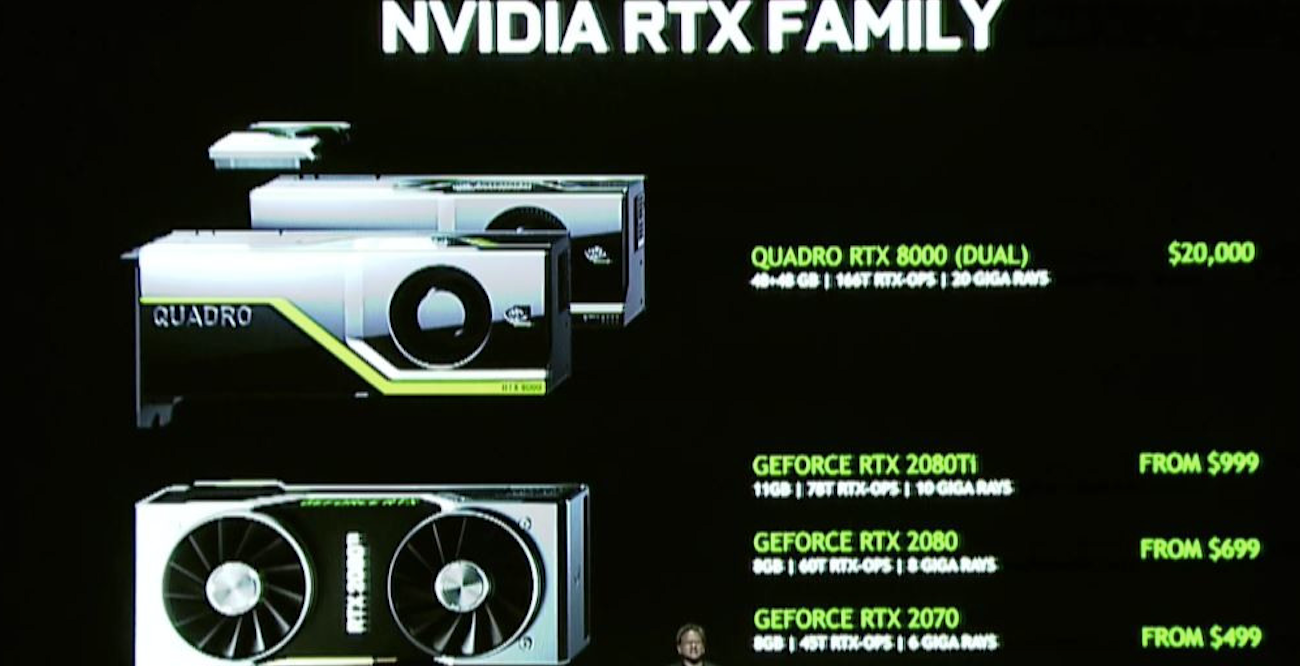I also have no clue what these two are arguing about...
Optix / Vulkan / DirectX all sit at the same point
DirectX and Vulkan are nothing more than Hardware Agnostic platforms to extend down into the GPU.
Optix meanwhile is native and Hardware Specific to Nvidia/CUDA. Optix has the same if not better performance than DirectX in that it doesn't have to traverse any Hardware Abstraction layers. If the diagram was truly accurate, there would be a
green section at the bottom of Vulkan and DXR denoting
Nvidia's driver. In the case of any other hardware company, a section denoting their proprietary driver providing an interface to DXR/Vulkan.
Ray tracing is possible right now on Pascal with all of the fancy features you saw demo'd.
The Demos Jensen ran on stage run on Pascal right now via Optix 5.1. It's just slow
er than Turing because there is no dedicated hardware acceleration (ray trace cores and tensor cores)
As far as I understand it, the tensor cores are used for AI accelerated Denoising or DLSS.
The ray trace cores do the ray intersection tests
and the BVH generation/traversal/etc are done in CUDA cores/other areas and is mapped to the SM's through an improved and shared caching mechanism between the rasterizer pipeline.
I have no clue what is being spoken about w.r.t to 'drivers'. The
driver for ray tracing is what everyone is already currently using in current gen hardware. DirectX nor Vulkan are needed for this. Each company has their own proprietary
"driver" and API/SDK. All DirectX and Vulkan do is provide a higher level API that
interfaces to this so that developers don't have to worry about hardware specific implementations. I'd expect Vulkan/DirectX to be slower than Optix or any other company's
native software. What Microsoft means by 'fallback' path is probably some janky generic 'OpenCL' like implementation that can run on all cards w/o any optimizations.
It's important to distinguish between hardware/drivers and
APIs.
DirectX is not a driver. It's an API :
https://en.wikipedia.org/wiki/DirectX :
Microsoft DirectX is a collection of
application programming interfaces (APIs) for handling tasks related to
multimedia, especially
game programming and video, on
Microsoft platforms.
Nothing of value is lost w/o it. The hardware has to already be capable and a
driver from the manufacturer along w/ an API/SDK made available for DirectX to provide hooks into.
DirectX 12 (DXR) doesn't enable ray tracing for Nvidia. It has existed for years via Optix. All directX 12 (DXR) provides is a high level easy to use hardware agnostic API for developers.
Cut Vulkan/DirectX12 out of the picture, and you'd still have the same real-time ray tracing functionality on Turing via Optix. Because such a horrid job is done at detailing 'real-time' ray tracing at the conferences, here's a simplified walk through on how it all works w/o any marketing nonsense:
https://developer.apple.com/videos/play/wwdc2018/606/
Yes, that uber demo Jensen showed in the box room of 'real-time' ray tracing and denoising can run on an Ipad.



